|
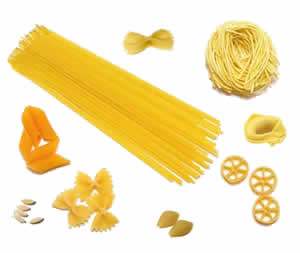 The Origins & Types of Pasta The Origins & Types of Pasta
Pasta's origins are very ancient. It's said that they go back actually to the Etruscans. Maybe they used to prepare the first lasagna made of spelt ( a kind of cereal like wheat, but far more resistant against bad weather and diseases). Later on, the romans used to make a very simple dough with water and flour from which they made a kind of lasagna, called lagane. This word is used also today in the center and the south of Italy to call some kind of Pasta.
Anyway, we must explode the myth that it was Marco Polo who brought Pasta in Italy when he came back from China. In fact, in 1279 a.d., when the great Venetian explorer was still in the East, in Genoa a will was draft with which a cerain Ponzio Bastone bequeathed a crate full of maccheroni! Certainly, we know that the Arabs, already in the XI century, brought Pasta around the Mediterranean basin, but it spread in an extraordinary way only in Italy, due to the very favorable climate.
Then in XVII century in Naples, Pasat met Tomato, arrived in Europe after America was discovered. This was a real gastronomic revolution, because this new joining quickly (and perhaps happily) caused the forgetfulness of those matching bittersweet and salted so popular until then. But pasta didn't go at once onto the princes' tables, because since then it was eaten using hands. It was near the year 1700 that a chamberlain of King Ferdinand II, a certain Gennaro Spadaccini, had the brilliant idea of using a fork with 4 short prongs, that became a common practice. Since then pasta was served also during the Courts' banquets all over Italy and from there its world tour began.
Today modern technology allows the standardization of pasta production and the reproduction of the ideal climatic conditions. So pasta production spread out in a lot of Nations. This overall propagation makes pasta the most known Italian food all around the world.
To order The Italian Cook Pasta Products online, please go to our My Shop area by clicking here.
|
|
|
 |
|
|
| |
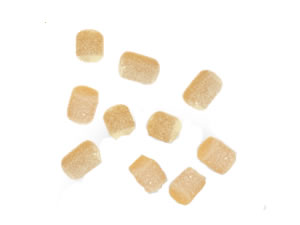 Acomo Pepe Acomo Pepe
Italian for "peppercorns", they look like tiny bead-shaped pasta.
|
|
| |
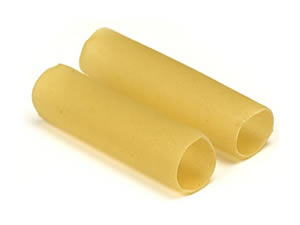 Cannelloni Cannelloni
Meat-filled or Cheese-filled tubes of pasta cooked in oven.
|
|
| |
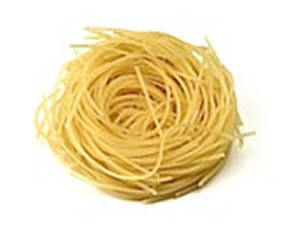 Capelli d'angelo Capelli d'angelo
Angel Hair pasta - very thin pasta
|
|
| |
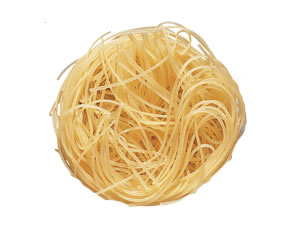 Capellini Capellini
From the Latin "capelli" for "hair", (diameter 0.90mm) capellini is very thin round pasta strands. It is only slightly thicker than angel hair, our thinnest long shape.
|
|
| |
 Conchiglie Conchiglie
Shells, called "conchiglie" in Italian, there are many sizes of these seashell-shaped pastas.
|
|
| |
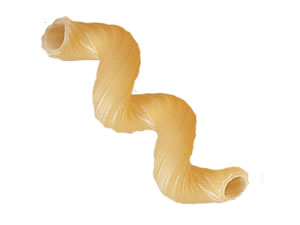 Cavatappi Cavatappi
Tubular corkscrew or spiral shaped pasta about 1-inch long, native to southern Italy.
|
|
| |
 Farfalle Farfalle
"Butterflies" in Italian; medium-sized pasta with a crimped center and pinked edges to form the shape of a bow tie. Bow Ties made in the Italian style are egg-free, while some versions contain egg.
|
|
| |
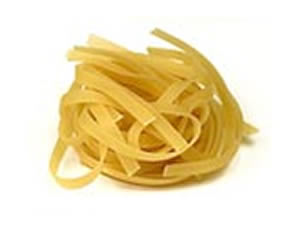 Fettucine Fettucine
"Little ribbons" in Italian, this shape originated in Rome. These flat wide pasta strands (width 4.70mm).are made in egg and egg-free versions. Fettuccine is classically paired with Alfredo Sauce, a rich cream sauce with Parmesan cheese.
|
|
| |
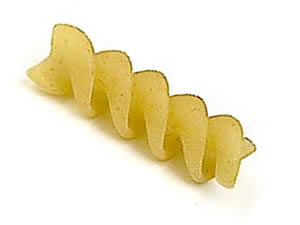 Fusilli Fusilli
Hollow corkscrew or spiral shaped pasta about 8-inches long.
|
|
| |
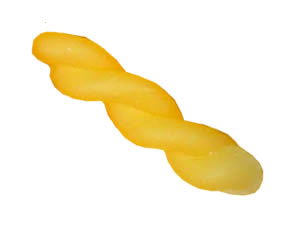 Gemelli Gemelli
"Twins" in Italian, this medium-sized shape resembles two short pieces of tubular spaghetti twisted together.
|
|
| |
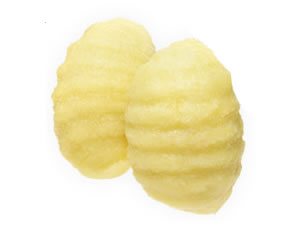 Gnocchi Gnocchi
Small dumplings made from potato and flour or from semolina.
|
|
| |
 Gomiti Gomiti
Short curved tubular pasta in a semi-circle shape.
|
|
| |
 Lasagna Lasagna
Our favorite baking shape Lasagne is a ripple-edged strip about 2-1/4-inches wide and 10-inches long. The dish, lasagne is layers of pasta, meat sauce and béchamel sauce.
|
|
| |
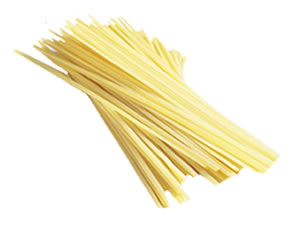 Linguine Linguine
"Little tongues" in Italian, this narrow, flat pasta is a specialty of southern Italy (width 2.65mm). It is frequently paired with white or red clam sauce.
|
|
| |
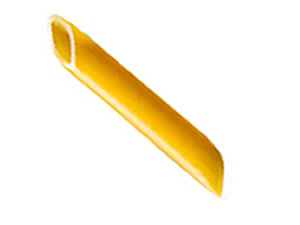 Mostaccioli Mostaccioli
Italians describe mostaccioli as "little mustaches". They are diagonally cut tubular shapes similar to penne, but larger. Mostaccioli has a smooth surface; Mostaccioli Rigati has a ridged surface.
|
|
| |
 Penne Rigate Penne Rigate
From the Latin for "feathers" (reminiscent of old-fashioned quill pens) they are diagonally cut tubular shapes with ridged surfaces.
|
|
| |
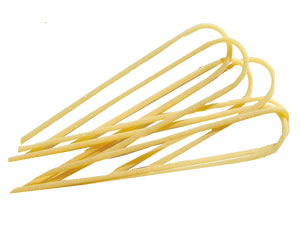 Perciato Perciato
From southern Italian dialect "perciato" meaning "pierced through", perciatelli are fat hollow strands.
|
|
| |
 Radiatore Radiatore
"Radiators" in Italian, these are short chunky ruffled shapes that add great eye appeal to any dish
|
|
| |
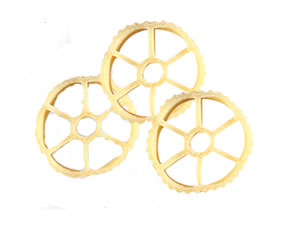 Rotelle Rotelle
Corkscrew or spiral shaped pasta, about 1-1/2-inches long.
|
|
| |
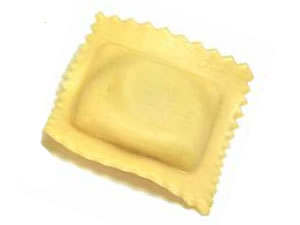 Ravioli Ravioli
Pasta cushions filled with meat or spinach - spinaci
|
|
| |
 Rigatoni Rigatoni
Large ribbed tubes about 1-1/2-inches long.
|
|
| |
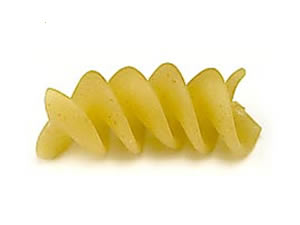 Rotini Rotini
Corkscrew or spiral shaped pasta, about 1-1/2-inches long.
|
|
| |
 Spaghetti Spaghetti
From the Italian word for "strings"; (diameter 1.78mm) these round thin strands are our most beloved pasta shape.
|
|
| |
 Tagliatelle Tagliatelle
Thin strips of ribbon pasta.
|
|
| |
 Tortellini Tortellini
Little pasta 'hats' with meat filling.
|
|
| |
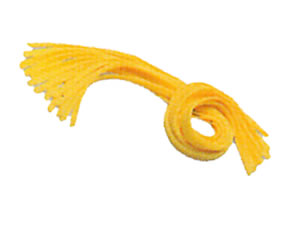 Trenette Trenette
long narrow strips of pasta
|
|
| |
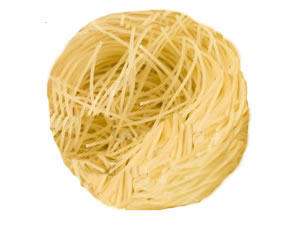 Vermicelli Vermicelli
From the Latin "verme" for "worms", vermicelli is round thin pasta strands that are thinner than spaghetti.
|
|
| |
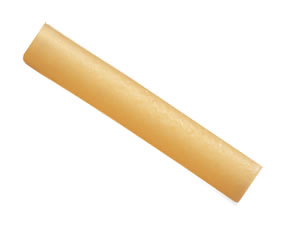 Ziti Rigati Ziti Rigati
Medium-sized tubular pasta about 2-inches long and slightly curved. This classic Southern Italian pasta means "bridegrooms"; it is often served at Sicilian weddings. Ziti Rigati has a ridged surface, while regular ziti is smooth.
|
Home | Advertising Information | Contact Us
Copyright ©2002 Italian Recipes Trinakria Development. All rights
reserved. |
 |
|
